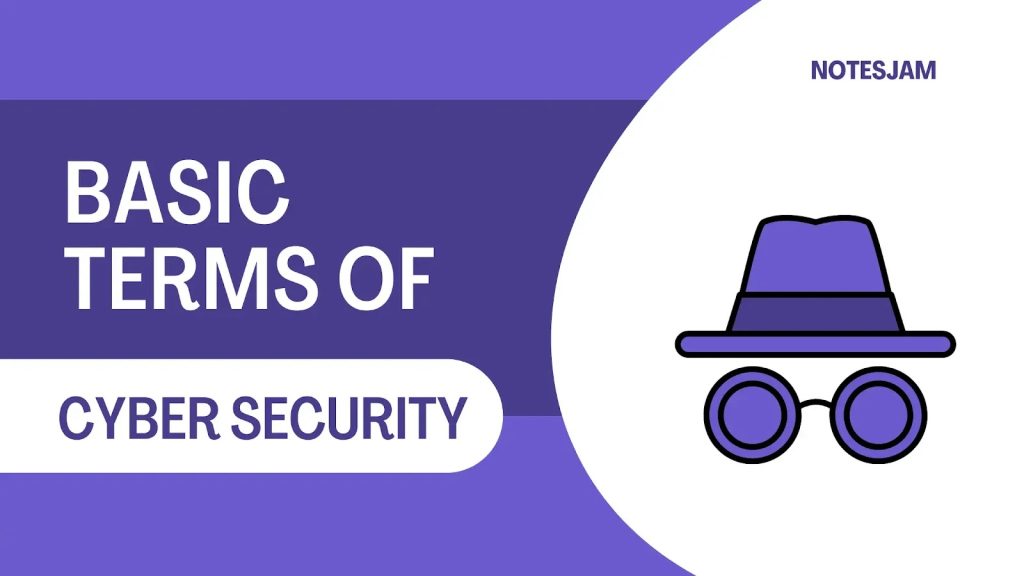
As technology advances, so does the need for cybersecurity. With the increasing number of cyber attacks, it is important to understand the basic concepts and terminologies of cybersecurity. In this blog post, we will cover some of the fundamental concepts and terms that everyone should be aware of in the field of cybersecurity.
- Confidentiality: This refers to the protection of sensitive information from unauthorized access. Confidentiality ensures that only authorized parties can access and view sensitive information.
- Integrity: This refers to the protection of data from unauthorized modification or deletion. Integrity ensures that data remains accurate and trustworthy.
- Availability: This refers to the accessibility of information and resources when needed. Availability ensures that information and resources are accessible to authorized parties at all times.
- Authentication: This refers to the process of verifying the identity of a user or device. Authentication ensures that only authorized parties can access sensitive information.
- Authorization: This refers to the process of granting access to resources or information. Authorization ensures that only authorized parties can access specific resources or information.
- Encryption: This refers to the process of converting plain text into a cipher text that can only be deciphered with a specific key. Encryption ensures that sensitive information remains confidential.
- Firewall: This refers to a security system that monitors and controls incoming and outgoing network traffic. Firewalls prevent unauthorized access and protect against cyber attacks.
- Malware: This refers to malicious software that is designed to harm a computer system. Malware can include viruses, worms, trojans, and spyware.
- Phishing: This refers to the practice of tricking individuals into divulging sensitive information. Phishing attacks can be conducted through email, social media, or other methods.
- Vulnerability: This refers to a weakness in a computer system that can be exploited by attackers. Vulnerabilities can exist in software, hardware, or configurations. Here are 20 more basic concepts and terminologies in cybersecurity:
- Denial of Service (DoS): This refers to an attack that floods a system or network with traffic, making it inaccessible to users.
- Distributed Denial of Service (DDoS): This refers to a DoS attack that is launched from multiple sources, making it more difficult to defend against.
- Intrusion Detection System (IDS): This refers to a system that monitors network traffic for suspicious activity and alerts security personnel.
- Intrusion Prevention System (IPS): This refers to a system that monitors network traffic for suspicious activity and takes action to prevent attacks.
- Virtual Private Network (VPN): This refers to a secure network connection that allows remote users to access resources as if they were on a local network.
- Two-Factor Authentication (2FA): This refers to a security process that requires two forms of identification, such as a password and a fingerprint, to access a system or resource.
- Public Key Infrastructure (PKI): This refers to a system that uses public and private keys to encrypt and decrypt information.
- Patch Management: This refers to the process of applying updates and patches to software and systems to fix vulnerabilities and improve security.
- Social Engineering: This refers to the practice of manipulating individuals into divulging sensitive information or performing actions that are against their best interests.
- Zero-Day Exploit: This refers to an attack that exploits a vulnerability that is unknown to the software vendor or security community.
- Advanced Persistent Threat (APT): This refers to a targeted and sophisticated cyber attack that is carried out over a prolonged period of time.
- Cyber Threat Intelligence (CTI): This refers to the process of gathering, analyzing, and sharing information about potential cyber threats. CTI helps organizations stay ahead of potential cyber attacks.
- Data Loss Prevention (DLP): This refers to the process of identifying, classifying, and protecting sensitive data from unauthorized access, use, or disclosure.
- Incident Response: This refers to the process of responding to and managing a cyber security incident, such as a data breach or malware attack.
- Security Information and Event Management (SIEM): This refers to a system that collects and analyzes security data from various sources to detect potential security incidents.
- Access Control: This refers to the process of managing who can access resources or information within an organization. Access control ensures that only authorized parties can access specific resources or information.
- Risk Assessment: This refers to the process of identifying potential security risks and vulnerabilities within an organization and developing strategies to mitigate those risks.
- Threat Modeling: This refers to the process of identifying and assessing potential threats to an application or system and developing strategies to mitigate those threats.
- Red Team and Blue Team: Red teams simulate attacks against an organization’s systems to identify vulnerabilities, while blue teams work to defend against those attacks.
- Cybersecurity Frameworks: These are frameworks, such as NIST or ISO, that provide guidelines and best practices for organizations to manage and improve their cybersecurity.
- Encryption Key Management: This refers to the process of managing encryption keys to ensure their confidentiality, integrity, and availability.
- Multi-Factor Authentication (MFA): This refers to a security process that requires multiple forms of identification, such as a password, fingerprint, and security token, to access a system or resource.
- Application Security: This refers to the process of securing applications, such as web and mobile applications, from potential security vulnerabilities.
- Cloud Security: This refers to the process of securing cloud-based resources and applications from potential security threats.
- Endpoint Security: This refers to the process of securing endpoints, such as laptops and mobile devices, from potential security threats.
- Security Operations Center (SOC): This refers to a facility that houses a team of security professionals who monitor and respond to potential security incidents.
- Internet of Things (IoT) Security: This refers to the process of securing IoT devices, such as smart home devices and medical equipment, from potential security threats.
- Penetration Testing: This refers to the process of simulating a cyber attack to identify vulnerabilities and weaknesses within an organization’s systems.
- Cyber Insurance: This refers to insurance policies that provide coverage against potential cyber attacks and data breaches.
- Regulatory Compliance: This refers to the process of complying with regulatory standards and requirements, such as GDPR or HIPAA, to ensure the security and privacy of sensitive information.
By understanding these basic concepts and terminologies in cybersecurity, individuals and organizations can better protect themselves against potential cyber threats. Implementing proper cybersecurity measures and following best practices can help prevent potential security incidents and minimize the impact of any incidents that do occur.







